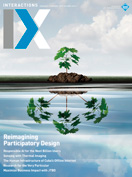Authors:
Oussama Metatla, Anja Thieme, Emeline Brulé, Cynthia Bennett, Marcos Serrano, Christophe Jouffrais
More than ever, digital content and tools are being introduced and accepted in diverse educational contexts, offering opportunities for innovation and for making learning processes more encompassing, engaging, and collaborative. Multimodal tools fostering tactile, auditory, and spatial learning promise increased access for students with vision impairments (VI). Yet many existing popular classroom technologies, such as Scratch for learning computer programming, rely heavily on visual content and interactions. In practice, this means that students with VI continue to rely on screen readers, magnifiers, and braille displays to access and engage with educational materials, while also leveraging frequent support from a…
You must be a member of SIGCHI, a subscriber to ACM's Digital Library, or an interactions subscriber to read the full text of this article.
GET ACCESS
Join ACM SIGCHIIn addition to all of the professional benefits of being a SIGCHI member, members get full access to interactions online content and receive the print version of the magazine bimonthly.
Subscribe to the ACM Digital Library
Get access to all interactions content online and the entire archive of ACM publications dating back to 1954. (Please check with your institution to see if it already has a subscription.)
Subscribe to interactions
Get full access to interactions online content and receive the print version of the magazine bimonthly.






